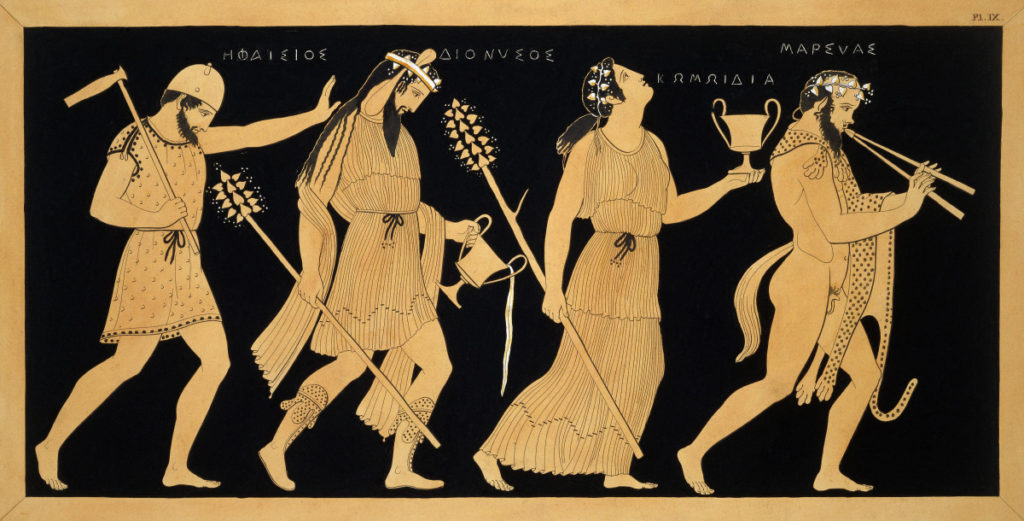Table of Contents
MIDDLE EASTERN MYTHOLOGY
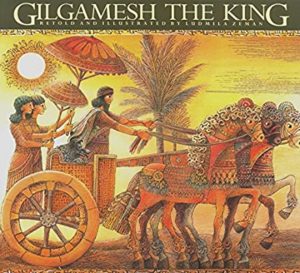 |
Ludmila Zeman’s Gilgamesh trilogy translates the ancient Sumerian epic into picture-book form for ages 7-9. Titles are Gilgamesh the King, The Revenge of Ishtar, and The Last Quest of Gilgamesh (Tundra Books, 1998). |
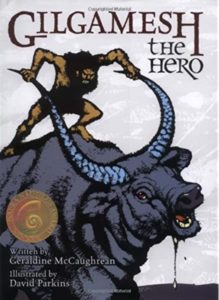 |
By Geraldine McCaughrean, Gilgamesh the Hero (Eerdmans Books, 2003) is a prose retelling of what may be the oldest story in the world, the tale of the Sumerian King Gilgamesh, his beloved friend Enkidu, and a quest for immortality. For ages 12 and up. |
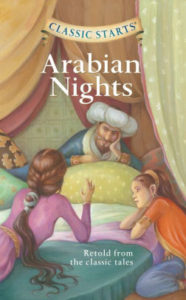 |
The Classic Starts Arabian Nights ((Sterling, 2008) includes nine simplified tales for younger readers, among them the stories of Aladdin, Sinbad the Sailor, and Ali Baba, with a prologue introducing King Shahryar and Scheherazade. For ages 7-9. |
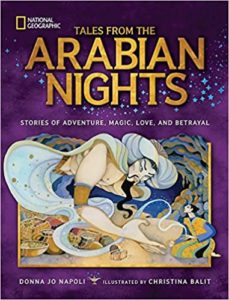 |
Donna Jo Napoli’s Tales from the Arabian Nights (National Geographic, 2016) is a beautifully illustrated and designed collection of gold-bordered stories from One Thousand and One Nights, including those of Aladdin, Ali Baba and the Forty Thieves, The Tale of Prince Hussein and the Magic Carpet, and The Tale of the Ebony Horse. For ages 8-12. |
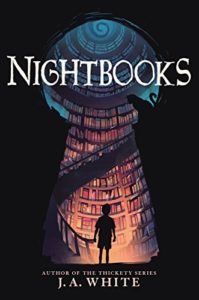 |
J.A. White’s Nightbooks (Katherine Tegen, 2019) is a creepy twist on the Scheherazade story, when Alex is kidnapped by a witch – and in order to survive, must tell her a different spooky story every night. For ages 9-12. |
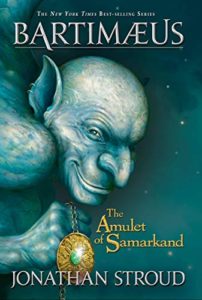 |
In Jonathan Stroud’s Bartimaeus Trilogy (Little, Brown, 2004), set in a parallel London, Nathaniel, a young magician’s apprentice, summons Bartimaeus, a 5000-year-old djinni – and the two are soon caught up in a complex tangle of magical espionage and revolution. Titles are The Amulet of Samarkand, The Golem’s Eye, and Ptolemy’s Gate. For ages 10 and up. |
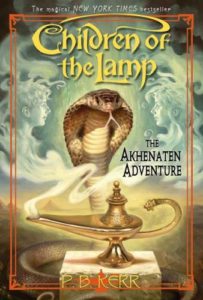 |
In P.B. Kerr’s Children of the Lamp series (Orchard Books, 2004), New York City twins John and Philippa discover that they’re descended from the Djinn and have magical powers. For ages 10 and up. |
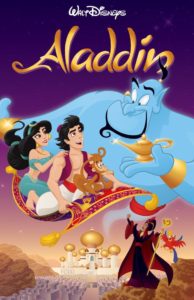 |
The story of the kind-hearted street urchin, Aladdin, the evil Grand Vizier, and the genie-containing magic lamp was produced as an animated movie in 1992, featuring the voice of Robin Williams as the giant blue genie (rated G), and again as a live-action film in 2019, with Will Smith as the (still blue) genie (rated PG). |
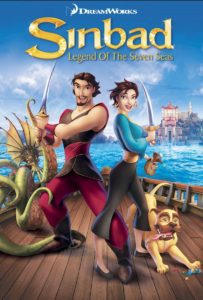 |
In the Arabian Nights animated adventure Sinbad: Legend of the Seven Seas (2003), Sinbad and his crew of pirates set out to find the magical Book of Peace and save the life of Sinbad’s friend Prince Proteus. Rated PG. |
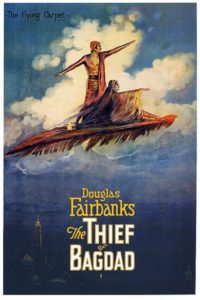 |
While there are glitzier and more recent versions, The Thief of Bagdad (1924) with Douglas Fairbanks as the thief of the title is still a delightful Arabian-Nights-style fantasy, complete with flying carpet. A family-friendly experience of film history. |
ASIAN MYTHOLOGY
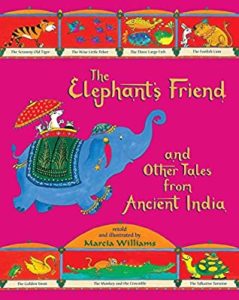 |
Marcia Williams’s The Elephant’s Friend and Other Tales from Ancient India (Candlewick, 2014) is a charmer: retellings of eight classic tales in clever panel-cartoon style. For ages 5-9. |
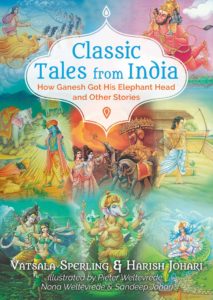 |
By Vatsala Sperling and Harish Johari, Classic Tales from India (Bear Cub Books, 2020) introduces the gods, goddesses, and heroes of India through eight classic tales drawn from the Mahabharata and the Ramayana. For ages 7-12. |
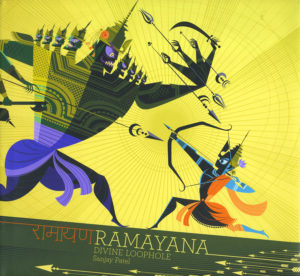 |
Sanjay Patel’s Ramayana: Divine Loophole (Chronicle Books, 2010) is a retelling of the story of Rama and his quest to rescue his wife, Sita, kidnapped by a demon king. Battles, monsters, and flying monkey gods for ages 9-12. |
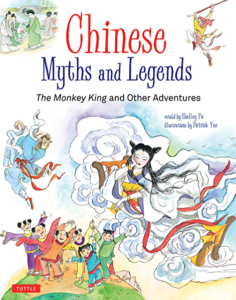 |
Stories in Shelley Fu’s Chinese Myths and Legends (Tuttle Publishing, 2018) are grouped under “Pan Gu and the Creation of the World,” “Nu Wo, the Mother of Mankind,” “Ho Yi the Archer,” “Journey to the West,” “The Man in the Moon,” “The Story of the White Snake,” and “The Heavenly River.” For ages 9-12.
|
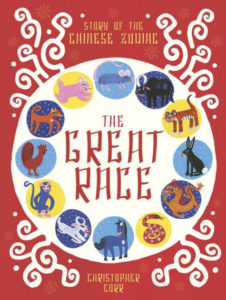 |
Christopher Corr’s The Great Race (Frances Lincoln Children’s Books, 2018) is the story of the animals’ race that established the Chinese zodiac – and made enemies of former friends Cat and Rat. For ages 4-8. Also see Ed Young’s Cat and Rat (Square Fish, 1998). |
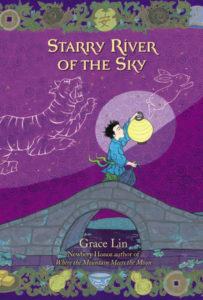 |
Titles in Grace Lin’s gorgeously illustrated and designed fantasy trilogy based on Chinese mythology are Starry River of the Sky (Little, Brown, 2014), When the Sea Turned to Silver (2017), and Where the Mountain Meets the Moon (2019). For ages 9-12. |
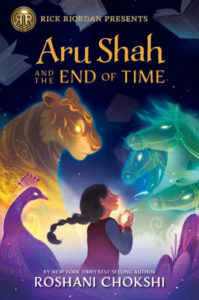 |
Roshani Chokshi’s Aru Shah and the End of Time (Rick Riordan Presents, 2019) is the first of an exciting fantasy series based on Hindu mythology. Twelve-tear-old Aru Shah inadvertently frees the Sleeper, an ancient demon whose mission is to awaken the God of Destruction. For ages 9-12. |
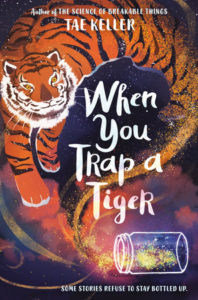 |
Tae Keller’s When You Trap a Tiger (Random House, 2020), is based on Korean mythology. Lily traps a magical tiger in hopes of helping her terminally ill grandmother – but tigers, as her grandmother always told her, are two-faced and tricky. For ages 8-12. |
|
See this online collection of Indian Mythological Stories. |
|
|
Japanese Mythology is a collection of five hyperlinked myths, starting with the Japanese creation myth and the story of the gods of the sun, moon, and wind. Also see Japanese Mythology from Academic Kids. |
|
|
From history teacher Mr. Donn, see Ancient Chinese Stories, Fables, and Legends for Kids. |
|
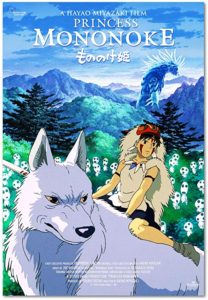 |
Princess Mononoke (1997) is an animated fantasy containing many elements from Japanese mythology. A young prince – cursed after a battle with a demon – goes in search of the Forest Spirit for help and becomes embroiled in a conflict between the gods of the forest and the Princess Mononoke and the people of a nearby village. Rated PG-13. |
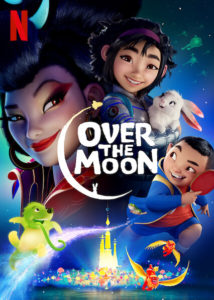 |
In Over the Moon (2020), a musical fantasy with elements of Chinese mythology, a young girl builds a rocket ship and sets of in search of the moon goddess. Rated PG. |
